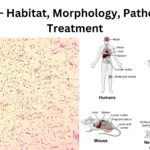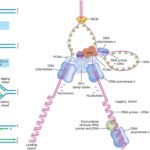IGCSE Biology 23 Views 1 Answers
Sourav PanLv 9November 14, 2024
State that a pathogen is transmitted: (a) by direct contact, including through blood and other body fluids (b) indirectly, including from contaminated surfaces, food, animals and air
State that a pathogen is transmitted: (a) by direct contact, including through blood and other body fluids (b) indirectly, including from contaminated surfaces, food, animals and air
Please login to save the post
Please login to submit an answer.
Sourav PanLv 9May 15, 2025
Pathogens can be transmitted in several ways, including:
(a) By Direct Contact
- Definition: Direct contact transmission occurs when an infected individual physically interacts with a susceptible person, allowing the pathogen to transfer directly from one host to another.
- Mechanisms:
- Skin-to-Skin Contact: This includes touching, kissing, or sexual intercourse, where pathogens can be exchanged through bodily fluids such as saliva, blood, or other secretions.
- Blood and Body Fluids: Pathogens can be transmitted through direct exposure to infected blood or other body fluids. For example, HIV can be transmitted through sexual contact or sharing needles contaminated with blood.
- Mother-to-Child Transmission: Infections can also be passed from mother to child during childbirth or breastfeeding.
(b) Indirectly
- Definition: Indirect transmission occurs when pathogens are spread through intermediaries rather than direct contact between hosts.
- Mechanisms:
- Contaminated Surfaces (Fomites): Pathogens can survive on inanimate objects such as doorknobs, utensils, or medical equipment. When a person touches these contaminated surfaces and then touches their mouth, nose, or eyes, they can become infected.
- Contaminated Food and Water: Pathogens can contaminate food and water sources, leading to infections when consumed. For example, Salmonella can spread through undercooked poultry or contaminated water.
- Airborne Transmission: Pathogens can be expelled into the air through respiratory droplets when an infected person coughs or sneezes. These droplets can then be inhaled by others nearby.
- Animal Vectors: Some pathogens are transmitted indirectly through vectors such as mosquitoes or ticks that carry the pathogen from one host to another without being affected themselves. For instance, malaria is transmitted by Anopheles mosquitoes.
0
0 likes
- Share on Facebook
- Share on Twitter
- Share on LinkedIn
0 found this helpful out of 0 votes
Helpful: 0%
Helpful: 0%
Was this page helpful?




